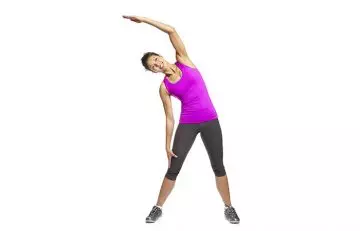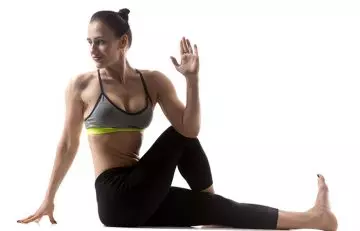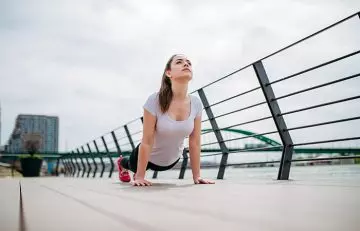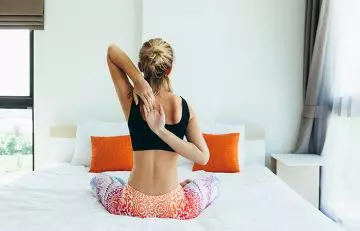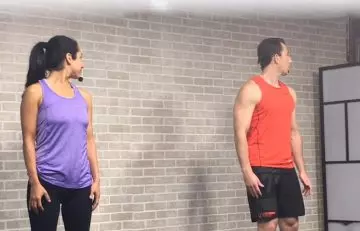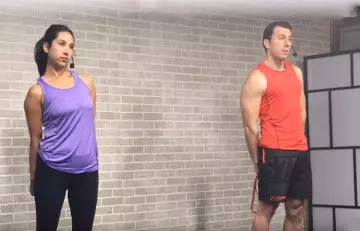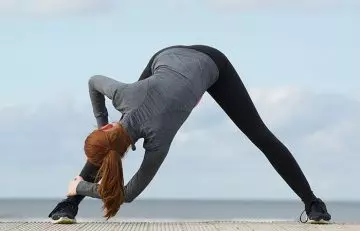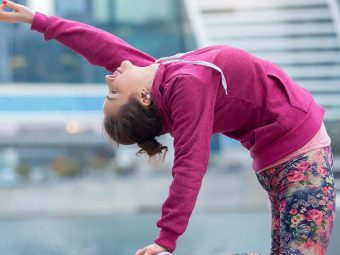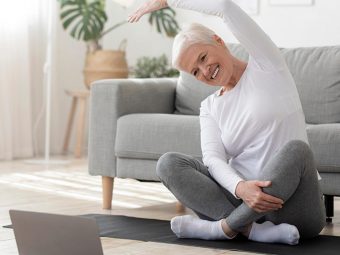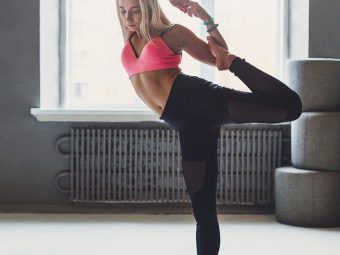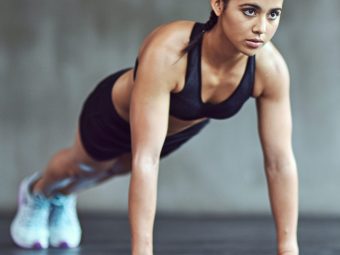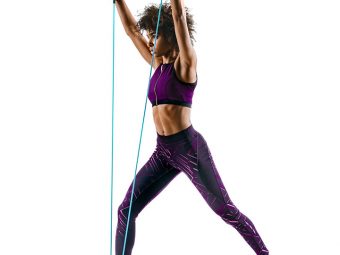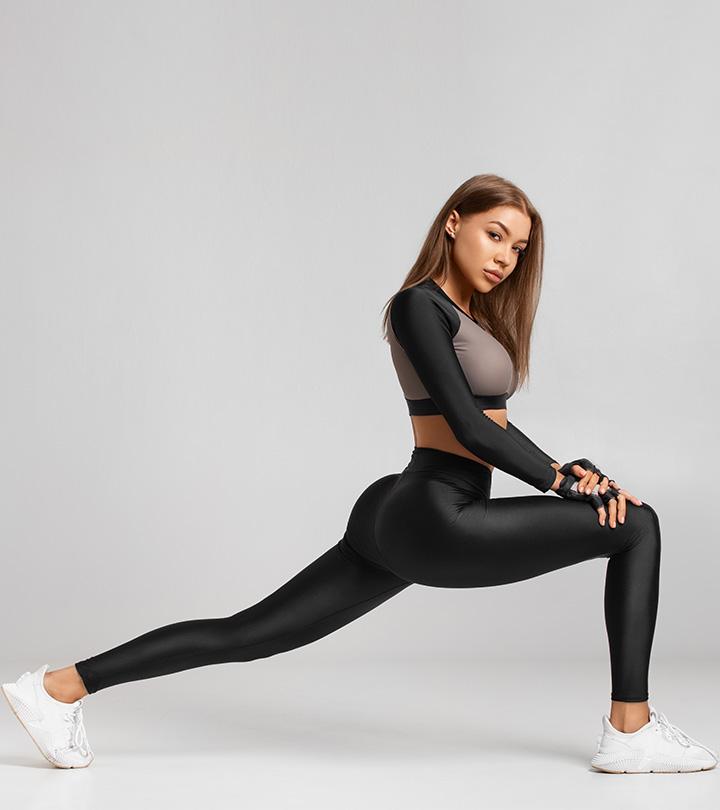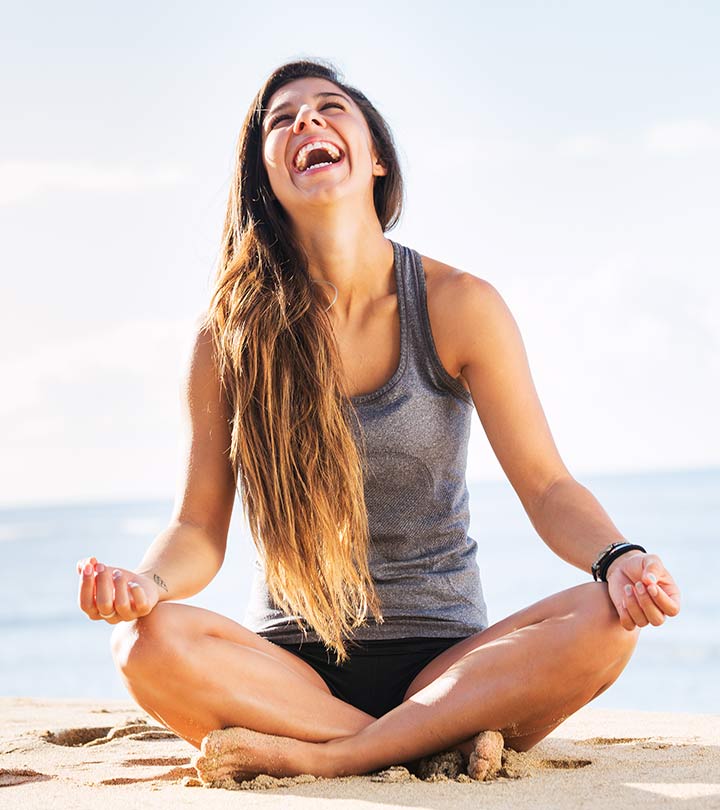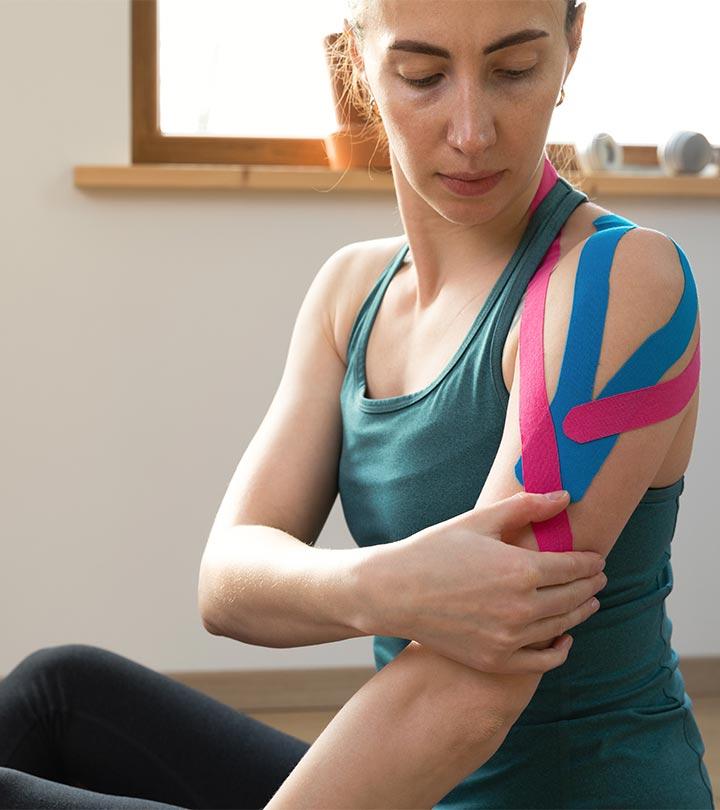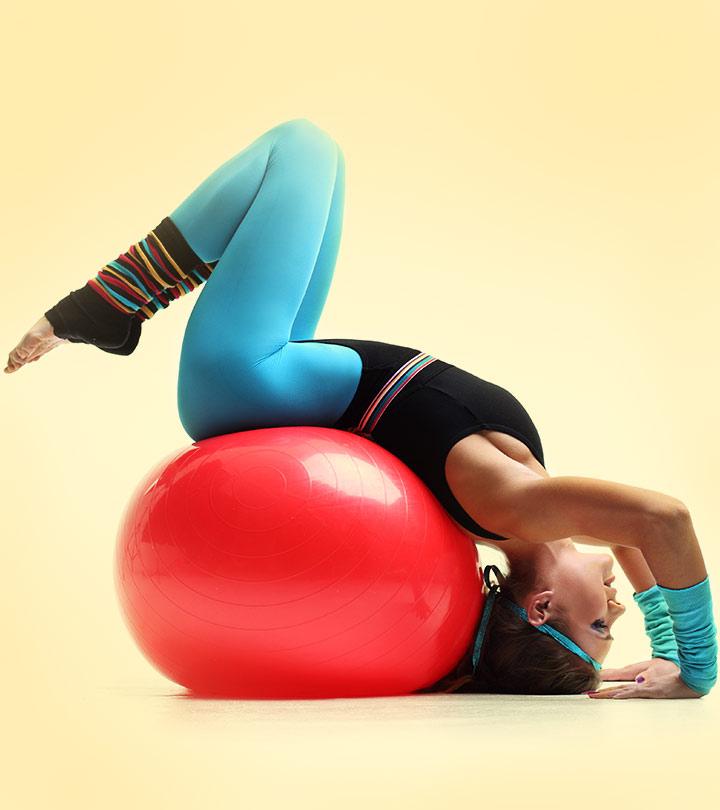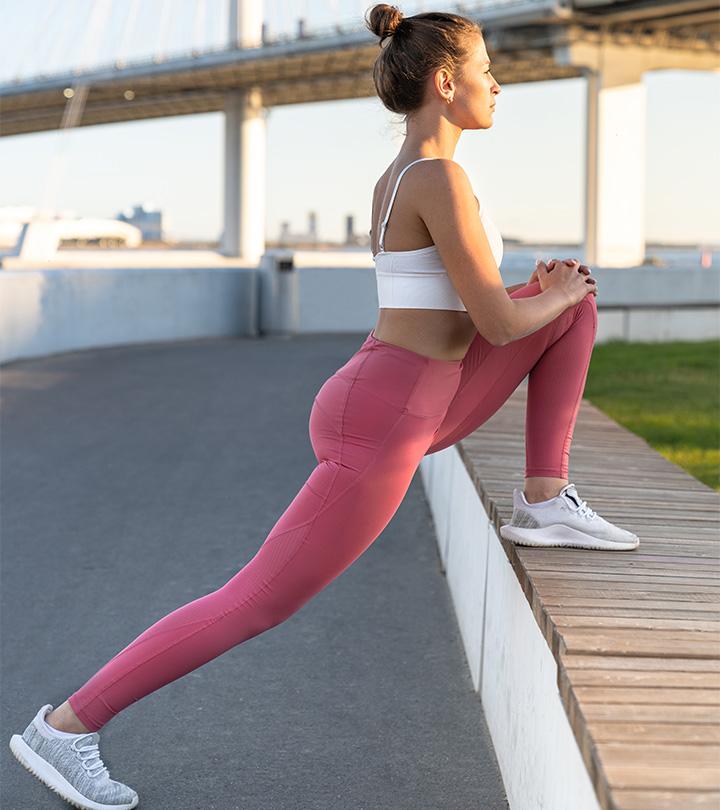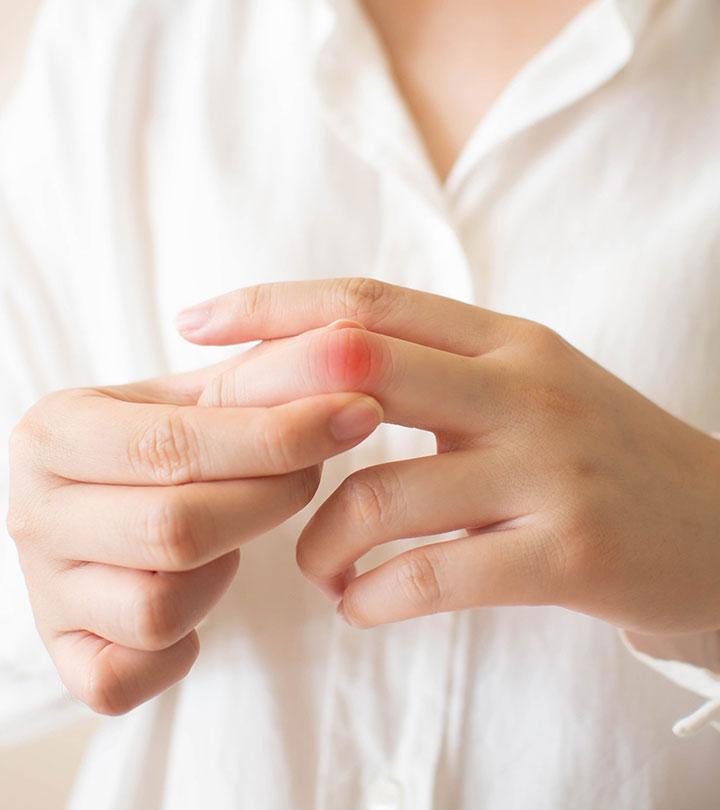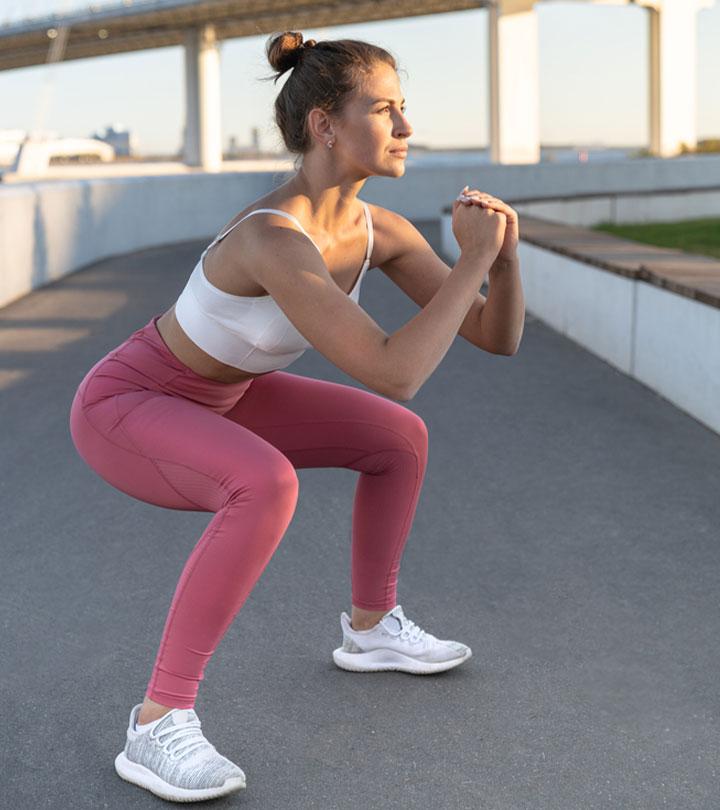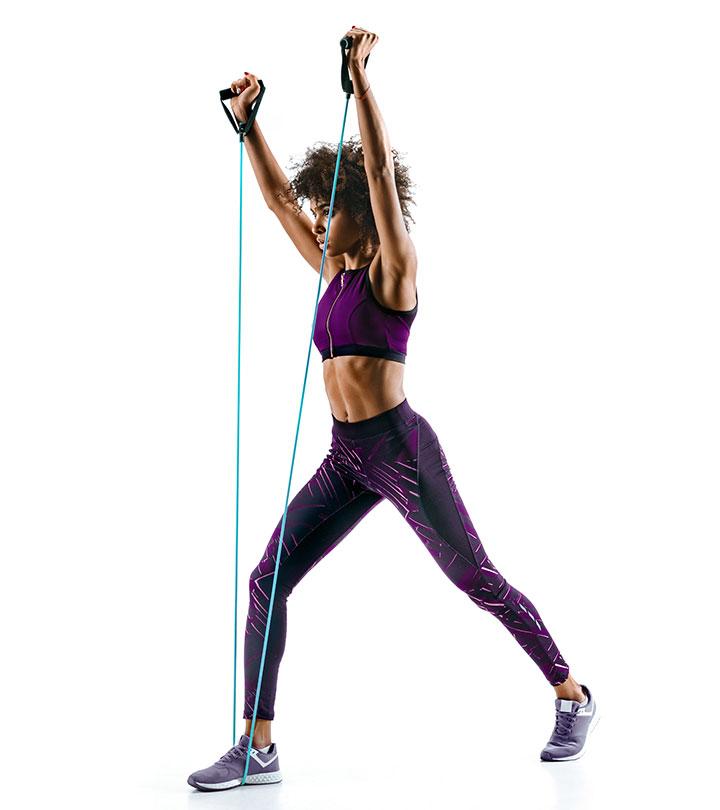8 Benefits Of Stretching & Essential Exercises For A Fit Body
Understand the advantages of stretching for a fitter and more flexible body.
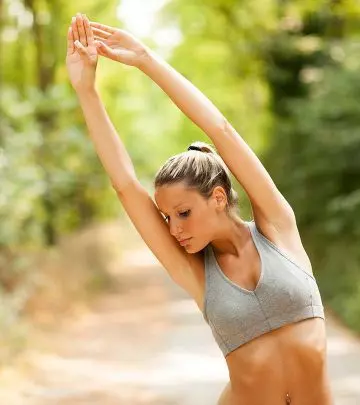
Image: Shutterstock
Stretching is one of the best ways to keep your body flexible, fit, and toned. There are other benefits of stretching too.
If you are not a fan of HIIT, cardio, or doing weights every day, and your body is sore, stretch! Before and after workout stretching helps loosen your muscles. It prepares your body for exercise, just like a warm-up. Also, your blood circulation improves and helps you feel energetic all day long. As a result, you will become proactive and do more in a day than you could before.
This article lists out the benefits of stretching daily. Read on to get all the information. Scroll down!
In This Article
What Happens When You Stretch?
When you stretch, you are lengthening your muscles as well as the fascia (connective tissue) that surrounds them. This releases pent-up tension and improves the overall movement of your body.
Stretching does more than just making your body more flexible. It offers a ton of benefits that you need to know about. Let’s take a look at them!
8 Life-Changing Benefits of Stretching
1. Increases Agility
Stretching increases the overall flexibility and joint range of motion of your body. This improves your body’s daily performance and makes you more agile and quicker on your feet.
2. Improves Blood Circulation
Stretching increases the blood flow throughout your body. This helps improve the recovery time for any injuries and removes the useless by-products of muscle tissues.
3. Better Body Posture
You can improve your body posture by stretching everyday. Body posture is very important when it comes to the kind of strain your muscles experience. It determines where you develop aches and pains.
4. Improves Body Coordination
Stretching helps improve complete body coordination. As you begin stretching on a daily basis, you will also see an improvement in your joint range of motion, i.e., how far you can stretch out your joints. It also treats tensed muscles and reduces stress (emotional and physical).
5. Therapeutic Effect
Stretching is said to be a therapeutic release for mild depression and emotional stress.
6. Increases Stamina
Your stamina increases with daily stretching, which means you get more work done in a day. When you stretch daily, you tend to feel less tired and more active.
7. Relieves Body Soreness
Soreness in the body is caused by tension in the muscles. Stretching can relieve the soreness and stiffness, making your body more active and alert over time.
8. A Cure For Sleepless Nights
Stretching can help you sleep better as the muscles in your body are more relaxed.
Stuart McDonald, a blogger, has tried stretching and shared his experience in a blog post. He says, “For me, however, stretching is about the experience during and after the stretch and it’s the most mindful way to exist. Not just immediately, though, not just the acute changes. I mean a long-term discipline of stretching and the changes it produces in my body. That experience — the freedom of movement, the freedom from certain pains, the feeling of comfort in my body— only comes about with a regular discipline of stretching combined with mindful meditation and strengthening (i).”
To prevent injuries while you stretch, here are some techniques you need to follow to help you get the best out of stretching.
Techniques For Proper Stretching
- Breathe Evenly
While stretching, regulate your breathing. Breathe in and breathe out for 3 seconds each. This helps your body relax while loosening your muscles and warming up your body.
- Warm Up Before You Stretch
Before you follow an extensive workout routine, it is important to increase your body’s temperature with warm-up exercises. This increases blood flow to your muscles, tendons, and ligaments, making them more elastic and less likely to get damaged and injured.
Jogging lightly or skipping for 30 seconds is enough to get your heart rate up and loosen your muscles. However, don’t overdo the intensity of the warm-ups.
 Quick Tip
Quick Tip- Moving While Stretching
When you bounce around while stretching, it causes light tears in the muscles, which become scar tissue. Over time, this scar tissue hardens and decreases flexibility.
Bouncing while stretching also prevents your muscles from loosening completely.
Try your best to keep your balance instead of flailing all over. Use a barre to help you in the beginning and then slowly do the stretches on your own. Try to stay steady and keep your balance as much as possible.
- Don’t Push Too Far
While a lot of people believe that you need to feel the burn while stretching, be careful not to push it too far. Stretching is meant to relax your muscles, not shock them into loosening up. The goal is to increase flexibility. Holding a stretch for too long or pushing yourself too hard can elevate the pain, or worse, cause an injury.
- Stretching Time
Make sure you hold each stretch for at least 30 seconds. This is a good amount of time to help your muscles relax with each stretching exercise. You want to loosen up the muscles so that they contract again after you stretch. 30 seconds is the right amount of time to release any tension that has built up in your body.
- Check In With A Doctor
Before you begin stretching daily, consult a physical therapist who can tell you the areas you need to work on and give you specific exercises to target them. If you have any aches in your body, it would be wise to check with a physical therapist before you start stretching.
- Stretch In The Morning
Stretching improves your body’s agility, enabling you to get more work done in a day than you otherwise would. Consider starting your day with a few simple stretches. It not only wakes your body up but also sets the tone for the entire day.
- Work Both Sides Equally
You need to perform each exercise on both sides for the same amount of time or number of reps to loosen up your muscles and increase flexibility all over your body. If one side hasn’t been stretched adequately, there can be a risk of injury.
- Before And After A Workout
Stretching before and after a workout helps keep the body loose. This will ensure your body is not overworked and gives it time to gradually cool off after a workout.
To improve your daily performance, here are a few stretching exercises that can help relieve your muscles.
Understanding the technicalities behind stretching sets the stage for incorporating it into your routine seamlessly. Now, explore the practical side and learn how to start a stretching routine.
How To Start A Stretching Routine
- Identify why you want to stretch, for instance, for flexibility or relaxation.
- Begin with easy stretches to warm up your muscles.
- Stretch your neck, shoulders, back, hips, and legs.
- Hold each stretch for 15-30 seconds and avoid bouncing.
- Inhale before the stretch, and exhale as you ease into it.
- Make stretching a regular habit; do it at least 2-3 times weekly.
- Do not push too hard; discomfort is okay, pain is not.
- Start by incorporating gentle movement stretches.
- End with calming stretches to relax.
- Drink water before and after stretching.
Essential Stretching Exercises
1. Downward Dog
The Downward Dog is a standing yoga pose used to build strength in the entire body. It stretches out your shoulders, arches, hamstrings, hands, calves, and spine, giving you a full-body workout. It provides relief from headaches, insomnia, and fatigue. Since it is a mild inversion stretch, blood flows to your brain and calms the nervous system, improves memory, and relieves stress.
If you have carpal tunnel syndrome, vertigo, or are in the final term of pregnancy, do not do the Downward Dog exercise. If you have high BP or an injury on your back, shoulders, or arms, this stretch can aggravate pain.
How To Do It
- Go down on your hands and knees, making sure your wrists are in line with your shoulders, and your palms are facing down. Keep your knees in line with your hips.
- Slowly lift your knees off the ground, pushing your pelvis up. Breathe evenly as you do this. Keep your knees straight.
- Stretch your arms out, making sure your hands are firmly on the ground. Don’t bend your elbows. Your body is now in an inverted ‘V’ shape.
- Push against the ground, keeping your hands and feet in place throughout.
- Hold this pose for around 16-20 seconds.
- Exhale as you bend your elbows and knees back on the ground.
Sets And Reps
Beginner:
1 set of 4 reps
Advanced:
2 sets of 10 reps
2. Side Bends
Side bends remove tension from your diaphragm, rib muscles, and the intercostal muscles between each rib. This allows your ribs to reach their full range of motion, giving an easy leeway for the lungs to contract and expand.
How To Do It
- Stand with your feet aligned with your hips. Keep your arms stretched out to the sides.
- As you exhale, lift your right hand over your head, bringing it to the left side. As you do this, bend your waist towards the left as well. Slide your left hand down to reach the left leg.
- Hold the pose for about 5 seconds.
- Inhale and return to the starting position. Repeat the same on the other side.
- Do 15 reps of this stretch on both sides, making it a total of 30 reps.
- You can also sit and try out these side bends.
Sets And Reps
Beginner:
1 set of 5 reps each
Advanced:
2 sets of 15 reps each
 Pro Tip
Pro Tip3. Seated Spinal Twist
The seated spinal twist increases spinal flexibility by relaxing the back muscles. This exercise improves digestion and relieves backache, sciatica, and menstrual discomfort. It also improves the blood flow to your organs.
Do not try this exercise if you have knee or lower back problems.
How To Do It
- Sit with your legs stretched out in front of you and keep your back straight.
- Slide your right leg towards you, bending it at the knee. Lift it and place it over the other side of your left leg.
- Twist your waist towards the right side, with your head facing behind.
- Stretch your left hand over the right knee, with your elbow bent and hand pointing upward.
- Keep your right hand firmly on the ground behind your back.
Sets And Reps
Beginner:
1 set of 5 reps on each side
Advanced:
3 sets of 5 reps on each side
4. Extended Child’s Pose
The Extended Child’s Pose stretches the upper body, focusing on your back and shoulders. Keeping your knees apart stretches the internal organs, while keeping them together gives the torso support and relieves back aches.
How To Do It
- Sit down with your knees bent under you.
- Bend forward, stretching your arms out to touch the ground with your palms.
- Keep your arms straight and your back stretched.
- Hold the pose for about 30 seconds before returning to the starting position.
Sets And Reps
Beginner:
1 set of 5 reps
Advanced:
3 sets of 5 reps
5. Lower Back Stretches
These exercises relieve lower back pain and stretch the muscles in that area. They also tone the glutes and stretch out the connected muscles and tissues.
a. Knees To Chest
How To Do It
- Lie down on your back.
- Bring your knees up to your chest and hold them in place with your arms.
- Keep your head and neck on the ground, making sure not to elevate them.
- Hold this pose for 30 seconds.
Sets And Reps
Beginner:
1 set of 4 reps
Advanced:
2 sets of 10 reps
b. The Full Plank
How To Do It
- The full plank stretches the entire body and increases overall flexibility and muscle tension. Lie face down with your hands aligned with your shoulders, palms facing down. Your toes need to be bent.
- Slowly raise yourself on your palms and toes, making sure your arms are stretched straight. Keep your body parallel to the ground and back straight.
- Look upward and breathe evenly.
- Hold this pose for 30 seconds.
Sets And Reps
Beginner:
2 sets of 1 rep. Hold for 20 seconds.
Advanced:
2 sets of 2 reps. Hold for a minute.
c. Horse Rider Pose
How To Do It
- Go on your knees, keeping your upper body straight.
- Slide your left leg out, keeping it bent at the knee, with your left foot flat on the ground.
- Stretch your arms over your head and join the palms together in a prayer pose.
- Stretch your arms back, bending your upper body backwards while facing upwards.
- Hold this pose for 30 seconds. Go back to the starting position and repeat the steps on the other side.
Sets And Reps
Beginner:
1 set of 5 reps on each side
Advanced:
2 sets of 10 reps on each side
6. Morning Stretches
Morning stretches help set the tone for your day. They increase your daily performance and are a great way to shake off any sleepiness. These exercises stretch out your body and relax your muscles.
a. Arm Stretch
This exercise stretches out your arms, elbows, and fingers.
How To Do It
- Sit down on the ground with your legs criss-crossed. Keep your upper body straight.
- Stretch out your right arm and bend your hand so that your palm faces outwards and your fingers point up.
- Hold your right hand with your left hand.
- Bend your right hand back with your left hand and hold the pose for 10 seconds.
- Repeat on the other side.
- Do this for 15 reps for each hand.
Sets And Reps
Beginner:
2 sets of 5 reps on each side.
Advanced:
3 sets of 12 reps on each side.
c. Folded Arms Stretch
This exercise loosens up the muscles around your shoulders, arms, and back.
How To Do It
- Sit down with your legs folded under you.
- Stretch your arms out on either side of your body.
- Bend your right arm and touch it to your back near your left shoulder blade. The back of your hand should touch your back.
- Bend your left arm over so that the palm touches the tips of the right hand at the back.
- Keep your back straight the entire time, and make sure you don’t pull your knees up.
Sets And Reps
Beginner:
1 set of 5 reps each
Advanced:
2 sets 15 reps each
c. The Knee Bend
This exercise focuses on your leg muscles.
How To Do It
- Stand straight.
- Lift your right leg up, bending it at the knee.
- Hold your right leg with your hands.
- Keep your back straight throughout.
- Balance your weight on your left leg.
- Hold the pose for about 30 seconds. Repeat with the other leg.
Sets And Reps
Beginner:
2 sets of 10 reps each
Advanced:
3 sets of 16 reps each
7. Self-Assisted Neck Stretches
Neck muscles need to be relaxed. When you sit for 8 hours at your desk, you are straining muscles that shouldn’t be strained. This causes aches in your body. Poor body posture, especially in the back, can strain your neck. To stretch these tensed muscles, you need to do neck exercises. Neck exercises stretch out muscles, fascia, and ligaments, preventing permanent damage. Neck exercises can also prevent premature joint degeneration and headaches.
a. The Neck Bend
How To Do It
- Keeping your shoulders straight, tilt your head to the left and then straighten it. Do this four times. The fifth time, tilt your head and hold this position for 10 seconds.
- Repeat the same on the other side.
- Keeping your shoulders straight, bend your head forward. Do this 4 times. The fifth time, bend your head and hold it for 10 seconds.
- Repeat the same backwards.
Sets And Reps
Beginner:
1 set of 3 reps each side.
Advanced:
2 sets of 8 reps each side.
b. The Neck Tilt
How To Do It
- Place your right hand at the top of your back, below your neck. Hold the top of your head with your left hand and pull it diagonally down.
- Repeat the same on the other side.
Sets And Reps
Beginner:
1 set of 5 reps each side. Hold the pose for 10 seconds.
Advanced:
2 sets of 12 reps each. Hold the pose for 20 seconds.
c. The Neck And Shoulder Bend
How To Do It
- You’ll need a towel or a band.
- Stretch the band with both your hands behind your back.
- Lower your right shoulder and tilt your head towards your left shoulder. Hold this position for 10 seconds.
- Repeat on the other side.
Sets And Reps
Beginner:
1 set of 5 reps each. Hold for 10 seconds.
Advanced:
2 sets of 12 reps each. Hold for 20 seconds.
8. The Hamstring Stretch
The exercise stretches your hamstrings so that when you workout or dance, you can move without feeling sore or fatigued.
How To Do It
- Stand straight.
- Bend your upper body and touch your toes with your fingers.
- Make sure you don’t bend your knees.
- Hold this pose for 30 seconds.
- Repeat this 10 times.
Sets And Reps
Beginner:
1 set of 3 reps. Hold for 15 seconds.
Advanced:
3 sets of 10 reps. Hold for 30 seconds.
9. The Bend And Stretch
This exercise works on your entire body, relaxing all your muscles and fascia.
How To Do It
- Stand with your back straight and your feet as far apart as possible.
- Bend your waist, holding your right calf with your left hand and the back of your right knee with your right hand.
- Make sure your knees are straight.
- Hold this position for about 10 seconds before you go back to the starting position. Repeat the same on the other side.
- Repeat this entire exercise for 15 reps on each side.
Sets And Reps
Beginner:
1 set of 5 reps on each side.
Advanced:
2 sets of 15 reps on each side.
As beneficial as stretching is for your body, there are some situations in which you need to avoid these exercises. Here’s what you need to know.
When To Avoid Stretching
- If you have any muscle strain, fractured bone, or joint sprain, stretching your muscles and ligaments can aggravate your pain and cause damage to your body.
- If you have acute body pains or sharp pains in any part of your body, check with a physical therapist before you stretch. Stretching the muscles around the affected area might cause permanent damage.
- If you are in the final term of your pregnancy, check with your physical therapist to find out what kind of stretching exercises you can do safely. Over-stretching in the late stages of pregnancy can lead to permanent damage.
While any form of exercise and physical movement is important to keep you fit and flexible, the benefits of stretching in any workout routine can’t be overlooked. Be it running, jogging, yoga, strength training, or cardio, the stretches pre- and post-workout help ease your body muscles and prepare your joints for the day’s activity. Stretching first thing in the morning can free up your body and relieve aches and pains to keep you going through the day.
Frequently Asked Questions
an you tone your body by stretching?
Stretching simply lengthens your muscles. You need to do strength training to build muscles, which is what gives you a toned body.
Can stretching help you lose weight?
Stretching only has an impact on your muscles. So, on its own, it cannot help with weight loss. It prepares your body for a strenuous workout session. Pair it with aerobics and strength training to lose weight.
Why does it feel so good when you stretch?
Stretching feels good because you are relaxing your muscles by stretching them out. This improves your body’s agility, making it easier for you to move and stay energized.
Is there such a thing as too much stretching?
Yes. With too much stretching, the fascial tissues lose their ability to recoil, and the inherent elasticity of these connective tissues disintegrates. As a result, they become less functional.
Discover the power of stretching! Watch this video, and explore the benefits of incorporating stretching into your daily routine. Learn how it enhances flexibility, improves posture, and promotes overall well-being for a healthier and more active lifestyle.
Personal Experience: Source
StyleCraze's articles are interwoven with authentic personal narratives that provide depth and resonance to our content. Below are the sources of the personal accounts referenced in this article.
(i). Stretching: A Run Downhttps://medium.com/@stuartmcdonald_60154/stretching-a-run-down-c19225a101e3






